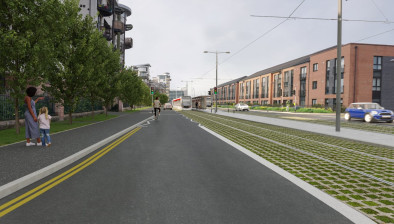Edinburgh Tram Inquiry makes formal call for public evidence
 The chair of the Edinburgh Tram Inquiry has formally called on members of the public to submit written evidence to the inquiry, specifically detailing how they were affected by the failure of the project to be delivered on time, within budget and to the extent projected.
The chair of the Edinburgh Tram Inquiry has formally called on members of the public to submit written evidence to the inquiry, specifically detailing how they were affected by the failure of the project to be delivered on time, within budget and to the extent projected.
The Rt. Honourable the Lord Hardie has also made a formal call for the public to submit written details of any additional key issues around the planning and construction phase of the Edinburgh Trams project that the inquiry should consider. This follows the publication yesterday on the Edinburgh Tram Inquiry website of a list of the key issues already identified as relevant to the work of the Inquiry.
The list of key issues has been compiled as the team continue to collate and review over 5 million documents relating to the Edinburgh Trams project.
Lord Hardie explained: “The inquiry is continuing to make good progress in line with the agreed terms of reference and the published order of events.
“Large infrastructure projects such as the Edinburgh Trams project generate vast quantities of documentation. The team has already gathered over 5 million documents, and is using innovative and sophisticated document management technology to assist in the review. By using this technology the time required to examine and analyse the material is being significantly reduced.
“In December last year I announced that at the appropriate time and stage I would make a formal call for evidence from members of the public affected by the delay and by the restricted nature of the project that was ultimately delivered. Today I am making that appeal to the public.
“The Edinburgh Tram Inquiry must base its findings on direct evidence from those affected by the planning and construction phase of the Edinburgh Trams project. Whether a local resident, business, developer or other interested party, this is the public’s opportunity to offer views on the direction of the Inquiry and to provide evidence for consideration.”





















